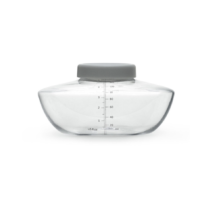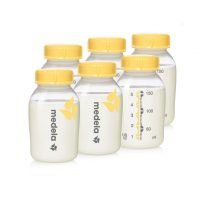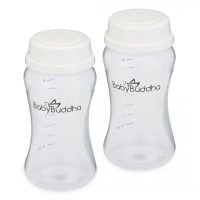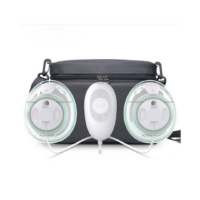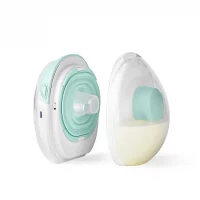Today, we’re going to talk about something that many breastfeeding mothers have questions about: How to store and transport pumped breast milk when traveling. Whether you’re traveling for work or for pleasure, it’s important to make sure your pumped breast milk stays fresh. As seasoned pros at traveling while pumping, we’ve got some tips and tricks for keeping breast milk safe while you’re on the go.
How to safely store pumped breast milk while traveling
Breast milk is a perishable food product, and it requires proper storage techniques just like more common foods.
- Use the right storage containers: Make sure to use bottles or bags that are specifically designed for storing breast milk. These containers are usually made of BPA-free plastic and have leak-proof seals.
- Label your breast milk: Be sure to label your breast milk with the date and time it was pumped, as well as your baby’s name.
- Store breast milk in a cooler: If you’re going to be on the go for more than a few hours, consider investing in a cooler or insulated bag to store your breast milk. Keep the cooler or bag out of direct sunlight and make sure to pack it with ice or ice packs to keep your breast milk cool.
- Use refrigerators when available: If you’re traveling by car or staying in a hotel, consider using a refrigerator to store your breast milk. Did you know that some hotels will provide a mini-fridge upon request?
- Know how long breast milk can be stored: Freshly pumped breast milk can be stored at room temperature for up to four hours, in a cooler with ice packs for up to 24 hours, in the refrigerator for up to four days, and in the freezer for up to six months.
How to transport pumped breast milk while traveling
In addition to safely storing your pumped breast milk, it’s important to transport it properly.
- Pack your breast milk in a secure container: Use a sturdy container, such as a small cooler or insulated bag, to transport your breast milk. Make sure the container is sealed properly and won’t leak during transport.
- Pack frozen breast milk in dry ice: If you’re traveling with frozen breast milk, consider packing it in dry ice to keep it frozen during transport. Make sure to follow the dry ice guidelines set by the airline or transportation provider.
- Know the TSA guidelines for traveling with breast milk: The TSA allows breastfeeding mothers to bring breast milk in their carry-on luggage, regardless of the amount. However, breast milk must be removed from your luggage and screened separately.
- Use freezer packs or ice packs: If you’re traveling with refrigerated breast milk, use freezer packs or ice packs to keep it cool during transport. Make sure the ice packs are completely frozen before packing them.
Common mistakes to avoid when traveling and pumping breast milk
To ensure the safety and quality of your pumped breast milk while traveling, avoid these common mistakes:
- Leaving breast milk at room temperature for too long
- Not properly labeling breast milk with the date and time it was pumped
- Not using the right storage containers or bags
- Not properly securing containers or bags during transport
- Not packing enough ice or ice packs to keep breast milk cool
Choose a wearable breast pump that makes pumping on the go easier.
Proper storage and transportation techniques are crucial for ensuring that your breast milk stays safe and fresh for your baby. And for those who want to make traveling and pumping even easier, popular wearable breast pumps such as the Elvie or Willow can be a game changer. These pumps are discreet, hands-free, and easy to use, making them perfect for on-the-go pumping. Don’t let travel slow you down – with the right tools and techniques, you can continue to provide your baby with the nourishment they need, no matter where your travels take you.

